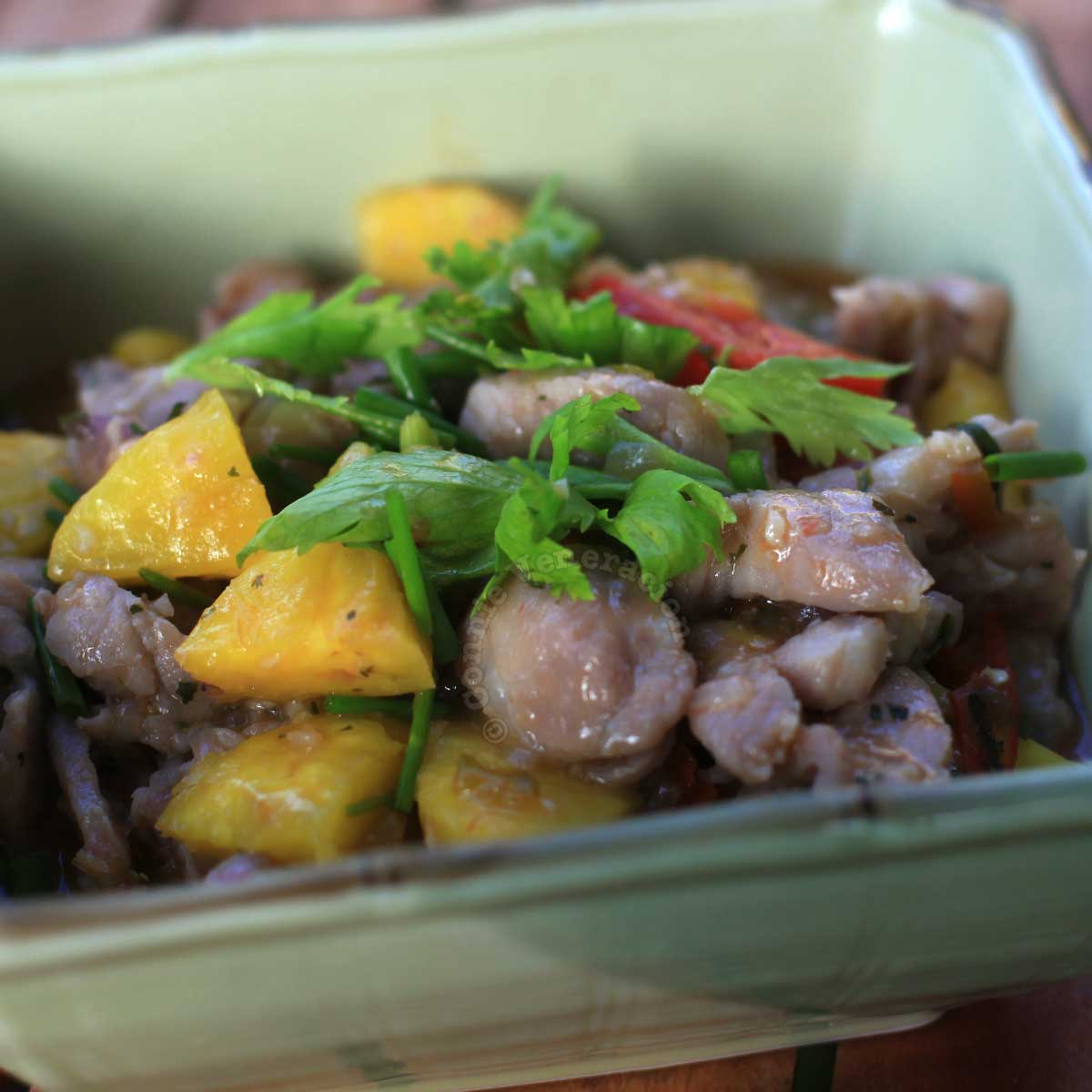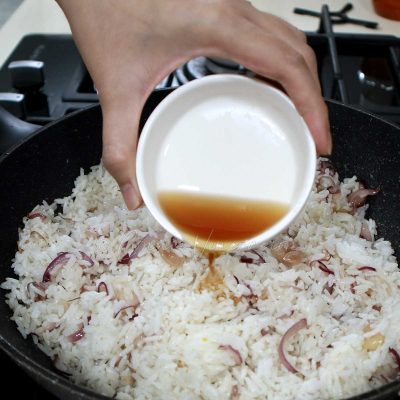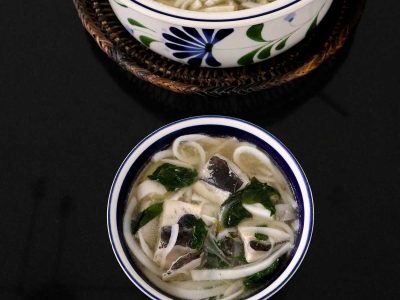Long before we visited Vietnam, we were already badly smitten with Vietnamese food. Or, at least, the version of Vietnamese food available locally.
While our acquaintance with the cuisine was initially limited to pho, spring rolls and beef stew, we augmented out knowledge by reading Vietnamese cookbooks and watching TV shows that featured Vietnamese food. Books by Andrea Nguyen and Luke Nguyen’s shows were more than helpful (no, I don’t think they’re related).
Then, we visited Vietnam a couple of times and indulged. A cooking class helped too. Today, we have a much better understanding of Vietnamese cooking. And we’ve created our home version of dishes we enjoyed in northern and southern Vietnam.
This dish, cooked long before we set foot in Vietnam, remains a favorite. Just what makes it so good? The simplicity of the cooking method, for starters. Marinate, stir fry the meat, stir fry the vegetables, combine the pork with the vegetables, add pineapple, pour in the sauce and toss together.
But it’s really the use of the correct ingredients that give this dish so much nuance in terms of flavor, texture and color. Use fish sauce, not salt. If you’re new to this seasoning, read the full post dedicated to fish sauce. That should give you a good idea why salt is not a passable substitute.
Fermented fish sauce: how it is made and used in cooking
We call it patis in the Philippines. According to Encyclopedia Britannica, it is nam pla in Thailand, nuoc mam in Vietnam, nam pa in Laos, tuk trey in Cambodia, ngan-pya-ye in Myanmar (Burma), and …
For best results, use fresh pineapple. Canned fruit just won’t give you the right texture and flavor. If you have to cut a whole pineapple to get those chunks, the linked post below should be helpful.
How to skin and cut pineapple without waste
I’ve seen a lot of chefs on TV cutting off a thick chunk of the pineapple’s skin to remove the “eyes.” So wasteful. Those eyes are at least a quarter of an inch deep, there’s …
Finally, about the starch to slightly thicken the sauce. It’s not much. Just a teaspoonful. You might think it won’t make any difference whether you use tapioca starch or cornstarch, or even if you substitute all-purpose flour which is the staple in most non-Asian kitchens.
But it does make a difference.
All-purpose flour will give you a cloudy sauce. Tapioca starch will yield a clear and glossy sauce. Cornstarch (not cornflour which is different) will also yield a clear sauce that is not as sticky nor glossy as one made with cornstarch.
For more about the difference between cornflour and cornstarch, see the post below.
Cornmeal, cornflour and cornstarch: are they the same?
All are made from dried corn. Cornmeal and cornflour are ground whole corn kernels. Cornstarch is made from the endorsperm (starchy center) of the kernel.
Vietnamese pork and pineapple stir fry (muc xao khom)

Ingredients
- 300 to 400 grams pork loin (not tenderloin which is too lean) thinly sliced
- 2 tablespoons sugar divided
- 2 to 3 tablespoons fish sauce
- ¼ to ½ teaspoon freshly ground black pepper
- 3 tablespoons cooking oil
- 3 cloves garlic peeled and minced
- 1 onion peeled and roughly chopped
- 1 bell pepper deseeded and roughly chopped
- 1 large and plump tomato cut into quarters or eighths
- 1 stalk celery finely sliced (save the leaves for garnish)
- 3 stalks onion leaves roughly chopped
- 1 teaspoon tapioca starch or cornstarch, dissolved in 2 tablespoons of water
- 1 tablespoon white vinegar
- 1 tablespoon lemon juice
- 1 cup fresh pineapple chunks
Instructions
- Place the pork in a bowl. Add half of the sugar, fish sauce and black pepper. Mix well, working the seasonings into the meat. Cover and marinate in the fridge for at least two hours.
- Mix together the remaining sugar, starch, vinegar and lemon juice for the sauce.
- Heat two tablespoons cooking oil in a wok or frying pan.
- Add the pork and stir fry until the meat changes color.
- Add the garlic and continue stir frying until the edges of the pork start to brown lightly.
- Scoop out the pork and keep warm.
- Add the remaining cooking oil to the wok and heat. Stir fry the onion, celery, bell pepper and tomato.
- Return the pork back into the wok.
- Add the pineapple chunks.
- Pour in the sauce.
- Cook, stirring often, just until the sauce thickens.
- Transfer the stir fried dish to a platter. Garnish with onion leaves and the celery leaves (and cilantro, if you like).
- Serve your Vietnamese pork and pineapple stir fry with hot rice.










